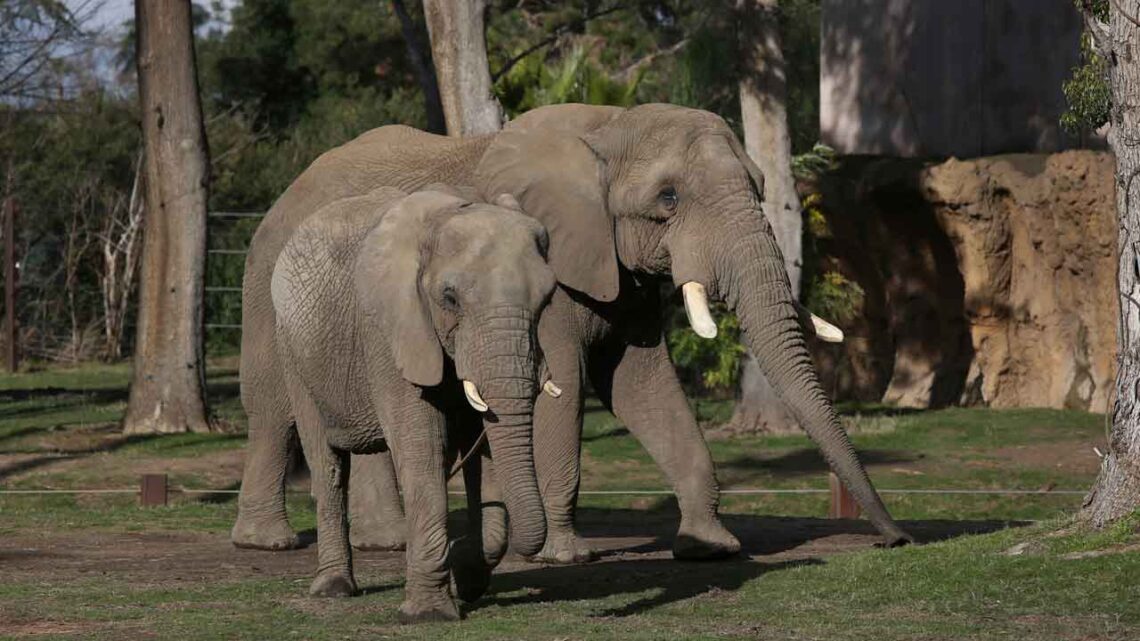Mabu saunters across a grassy field and raises his long, gray trunk to wrangle food from a hole carved inside a large boulder, captivating the attention of a girl propped up on her father’s shoulders.
At this zoo in a central California farming community, the 32-year-old African elephant is key not only to drawing visitors but also to ensuring there are elephants for zoogoers to see in the years to come — a future some animal lovers want to avoid.
Over the past year, the Fresno Chaffee Zoo has been pulled into a growing global debate over the future of elephants in zoos. In recent years, some zoos have phased out elephant exhibits due to the complexity of the animals and their needs. Still, others, like Fresno’s zoo, say they are committed to keeping elephants and are turning to breeding, arguing that a sustainable population of zoo elephants will help spur a commitment to wildlife conservation among future generations of visitors.
The zoo in Fresno, while beloved by local residents, has been targeted by animal activists in a report criticizing living conditions for the elephants and in legal actions trying to free them. Broadly, some elephant experts say urban zoos simply don’t have the space that African elephants, who roam extensive distances in the wild to forage for hundreds of pounds of vegetation each day, need for a normal life.
BABY ELEPHANT PLAYS IN A SPRAY OF WATER FOR VISITORS: SEE THE ADORABLE VIDEO
The zoo opened a revamped and expanded multi-species African Adventure exhibit in 2015 to better accommodate elephants, lions and gazelles by giving them more space to roam. It’s also been working with other zoos around the country on breeding more of the animals, which are endangered in the wild, in the United States.
Mabu came to the zoo from one in Arizona last year after Vus’Musi, another male elephant, showed little interest in breeding. Mabu has sired offspring at other zoos and there’s hope he can do so again to grow the Fresno zoo’s…
Read the full article here







